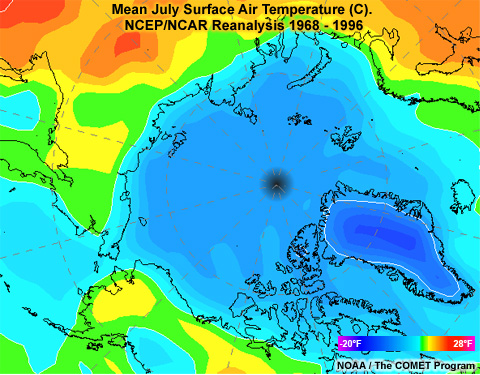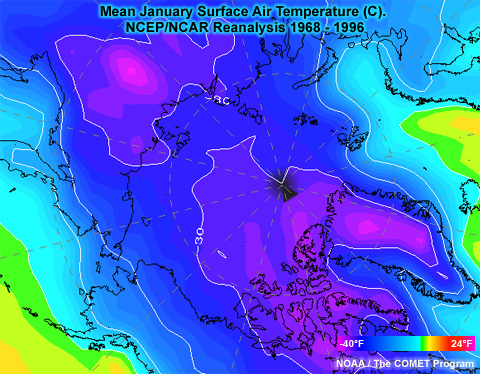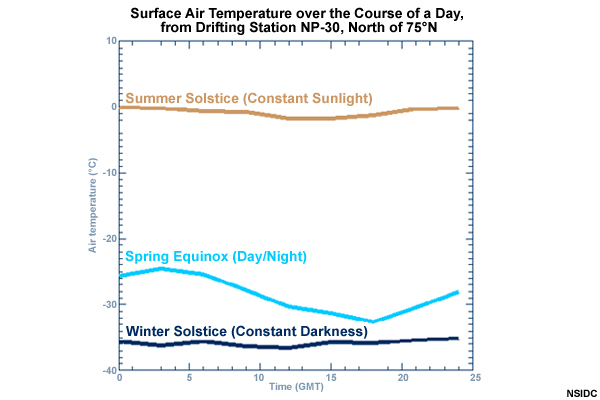Arctic ClimateSeasonal Temperatures


On land, temperatures in the Arctic are highly variable. Outside of glaciated areas, snow cover is quite thin and melts early in summer. This allows land to warm considerably under the continuous daylight. However, under the continuous darkness of winter, land cools and temperatures can become bitterly cold.
Over the ocean, summer temperatures are strongly moderated by open water and sea ice, which have summer temperatures near 0°C. In the winter, the water in the Arctic Ocean below the polar ice pack is never colder than -2°C (28°F). This moderates the overall climate and helps keep Arctic winters warmer than those in Antarctica.
The coldest winter temperatures typically occur in northern Asia, while the warmest winter temperatures are found where the North Atlantic Drift, the eastward extension of the warm Gulf Stream, flows up into the Norwegian and Barents Seas.

Continuous daylight in summer and darkness in winter lead to temperatures without a diurnal cycle of daytime warming and nighttime cooling. In winter, clear skies lead to strong radiational cooling and the formation of pronounced inversions. Temperatures rise when winds are strong enough to mix out the inversion and bring warmer air aloft down to the surface. Cyclones bring not only high winds that mix out the inversion, but also draw warmer, moister air from lower latitudes.